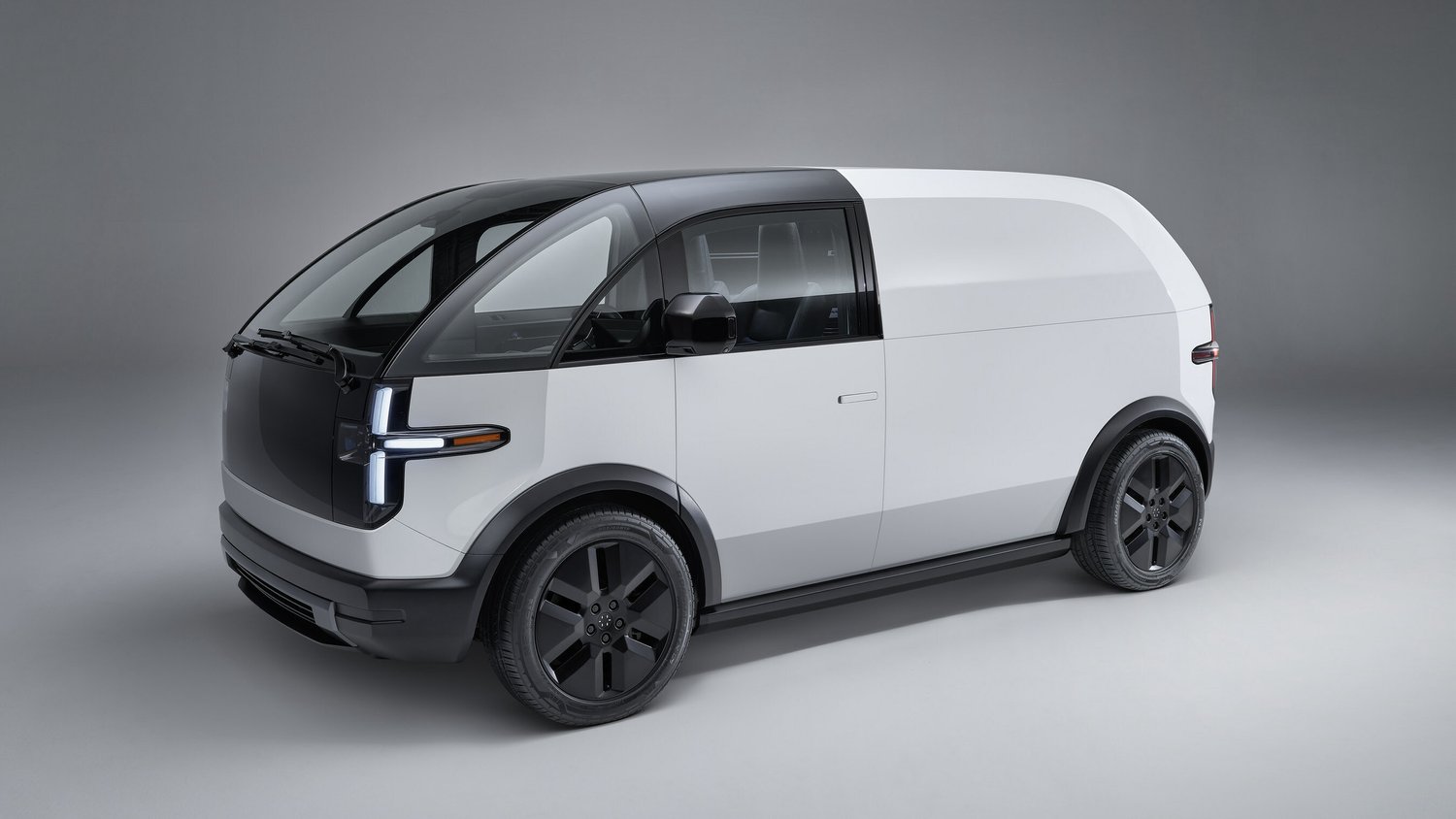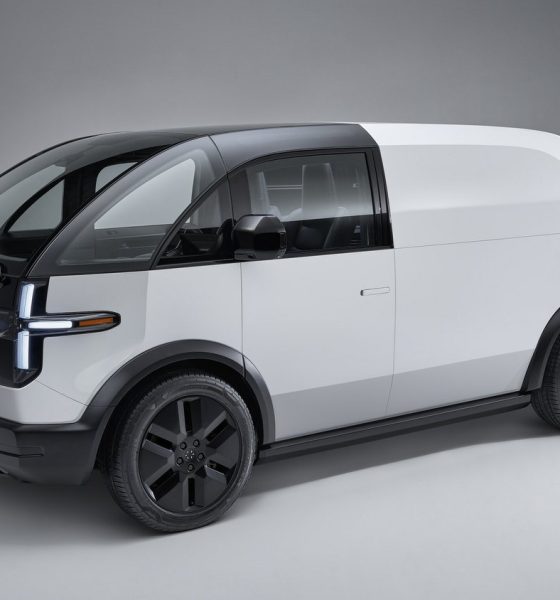Electric vehicle (EV) startup Canoo is preparing to begin delivery of its first Oklahoma-built units, with the initial batch going to the state.
Canoo is set to begin delivering its first units of the Lifestyle Delivery Vehicle (LDV), produced at its Oklahoma City plant, to the state’s Office of Management and Enterprise Services (OMES), according to a press release shared on Monday. OMES plans to purchase its first three LDV units by the end of this year, and the parties have an agreement with Oklahoma for as many as 1,000 of the LDVs while Canoo continues ramping manufacturing.
“We are proud to be part of this historic moment as Canoo builds momentum on its road to full-scale production,” Oklahoma Governor Kevin Stitt said in the release. “This marks Oklahoma’s return to vehicle manufacturing and proves ‘The Sooner State’ is the right place to grow cutting-edge businesses and create new jobs.”
The milestone marks the beginning of Canoo’s plans for phased-ramp manufacturing in Oklahoma, with the company planning to continue ramping production in the coming years. The release also says that unit deliveries will be made to Canoo’s key customers and partners in the remainder of this year, and the company plans to increase delivered units in 2024.
Additionally, the electric vehicle (EV) maker is hiring at both its Oklahoma City and Pryor facilities, expected to create as many as 1,300 jobs. The automaker also announced its American Bulldog pickup just last week, entering the increasingly-competitive electric truck sector.
Sculpted with grit, powered by innovation. The American Bulldog is paving new trails for the next generation of EV technology.#EV #Canoo #AmericanBulldog pic.twitter.com/dfl0Ptz2Ol
— Canoo (@canoo) November 10, 2023
“It’s an honor to partner with the state of Oklahoma and its workforce to create a legacy for electric vehicles in America’s Heartland,” Canoo Chairman and CEO Tony Aquila said.
“What is inspiring to me is that it takes just a small group of innovators and hardworking believers who find a way to win. I want to thank Governor Stitt and his team for believing in us. We want our vehicles to provide service to Oklahomans who have been our partners through this journey.”
The LDVs are built on Canoo’s configurable, multi-purpose platform and are intended for commercial and government fleet customers. Last December, Canoo delivered its very first units, Light Tactical Vehicles (LTVs), to the U.S. Army. In July, the startup also delivered three Crew Transportation Vehicles (CTVs) to NASA.
Canoo says the vehicles are also made to help fleet operators cut operating costs, a point that was reiterated in the announcement by OMES Executive Director John Suter.
“We are excited to add Canoo vehicles to the state’s pooled fleet as part of a broader initiative to improve efficiency, cut waste and improve stewardship of taxpayer dollars,” Suter said. “We look forward to evaluating these new assets and the role they can play in modernizing Oklahoma’s vehicle use.”
The startup has also elicited large fleet orders from commercial customers, including Walmart, Zeeba and Kingbee.
Updated 11/15/23: Corrected the second paragraph to note that OMES is purchasing the initial units by the end of this year, after originally reporting that the first few units had already begun delivery.
Canoo continues rapid production expansion with yet another new facility
What are your thoughts? Let me know at zach@teslarati.com, find me on X at @zacharyvisconti, or send your tips to us at tips@teslarati.com.

News
Nvidia CEO Jensen Huang explains difference between Tesla FSD and Alpamayo
“Tesla’s FSD stack is completely world-class,” the Nvidia CEO said.

NVIDIA CEO Jensen Huang has offered high praise for Tesla’s Full Self-Driving (FSD) system during a Q&A at CES 2026, calling it “world-class” and “state-of-the-art” in design, training, and performance.
More importantly, he also shared some insights about the key differences between FSD and Nvidia’s recently announced Alpamayo system.
Jensen Huang’s praise for Tesla FSD
Nvidia made headlines at CES following its announcement of Alpamayo, which uses artificial intelligence to accelerate the development of autonomous driving solutions. Due to its focus on AI, many started speculating that Alpamayo would be a direct rival to FSD. This was somewhat addressed by Elon Musk, who predicted that “they will find that it’s easy to get to 99% and then super hard to solve the long tail of the distribution.”
During his Q&A, Nvidia CEO Jensen Huang was asked about the difference between FSD and Alpamayo. His response was extensive:
“Tesla’s FSD stack is completely world-class. They’ve been working on it for quite some time. It’s world-class not only in the number of miles it’s accumulated, but in the way it’s designed, the way they do training, data collection, curation, synthetic data generation, and all of their simulation technologies.
“Of course, the latest generation is end-to-end Full Self-Driving—meaning it’s one large model trained end to end. And so… Elon’s AD system is, in every way, 100% state-of-the-art. I’m really quite impressed by the technology. I have it, and I drive it in our house, and it works incredibly well,” the Nvidia CEO said.
Nvidia’s platform approach vs Tesla’s integration
Huang also stated that Nvidia’s Alpamayo system was built around a fundamentally different philosophy from Tesla’s. Rather than developing self-driving cars itself, Nvidia supplies the full autonomous technology stack for other companies to use.
“Nvidia doesn’t build self-driving cars. We build the full stack so others can,” Huang said, explaining that Nvidia provides separate systems for training, simulation, and in-vehicle computing, all supported by shared software.
He added that customers can adopt as much or as little of the platform as they need, noting that Nvidia works across the industry, including with Tesla on training systems and companies like Waymo, XPeng, and Nuro on vehicle computing.
“So our system is really quite pervasive because we’re a technology platform provider. That’s the primary difference. There’s no question in our mind that, of the billion cars on the road today, in another 10 years’ time, hundreds of millions of them will have great autonomous capability. This is likely one of the largest, fastest-growing technology industries over the next decade.”
He also emphasized Nvidia’s open approach, saying the company open-sources its models and helps partners train their own systems. “We’re not a self-driving car company. We’re enabling the autonomous industry,” Huang said.
Elon Musk
Elon Musk confirms xAI’s purchase of five 380 MW natural gas turbines
The deal, which was confirmed by Musk on X, highlights xAI’s effort to aggressively scale its operations.

xAI, Elon Musk’s artificial intelligence startup, has purchased five additional 380 MW natural gas turbines from South Korea’s Doosan Enerbility to power its growing supercomputer clusters.
The deal, which was confirmed by Musk on X, highlights xAI’s effort to aggressively scale its operations.
xAI’s turbine deal details
News of xAI’s new turbines was shared on social media platform X, with user @SemiAnalysis_ stating that the turbines were produced by South Korea’s Doosan Enerbility. As noted in an Asian Business Daily report, Doosan Enerbility announced last October that it signed a contract to supply two 380 MW gas turbines for a major U.S. tech company. Doosan later noted in December that it secured an order for three more 380 MW gas turbines.
As per the X user, the gas turbines would power an additional 600,000+ GB200 NVL72 equivalent size cluster. This should make xAI’s facilities among the largest in the world. In a reply, Elon Musk confirmed that xAI did purchase the turbines. “True,” Musk wrote in a post on X.
xAI’s ambitions
Recent reports have indicated that xAI closed an upsized $20 billion Series E funding round, exceeding the initial $15 billion target to fuel rapid infrastructure scaling and AI product development. The funding, as per the AI startup, “will accelerate our world-leading infrastructure buildout, enable the rapid development and deployment of transformative AI products.”
The company also teased the rollout of its upcoming frontier AI model. “Looking ahead, Grok 5 is currently in training, and we are focused on launching innovative new consumer and enterprise products that harness the power of Grok, Colossus, and 𝕏 to transform how we live, work, and play,” xAI wrote in a post on its website.
Elon Musk
Elon Musk’s xAI closes upsized $20B Series E funding round
xAI announced the investment round in a post on its official website.

xAI has closed an upsized $20 billion Series E funding round, exceeding the initial $15 billion target to fuel rapid infrastructure scaling and AI product development.
xAI announced the investment round in a post on its official website.
A $20 billion Series E round
As noted by the artificial intelligence startup in its post, the Series E funding round attracted a diverse group of investors, including Valor Equity Partners, Stepstone Group, Fidelity Management & Research Company, Qatar Investment Authority, MGX, and Baron Capital Group, among others.
Strategic partners NVIDIA and Cisco Investments also continued support for building the world’s largest GPU clusters.
As xAI stated, “This financing will accelerate our world-leading infrastructure buildout, enable the rapid development and deployment of transformative AI products reaching billions of users, and fuel groundbreaking research advancing xAI’s core mission: Understanding the Universe.”
xAI’s core mission
Th Series E funding builds on xAI’s previous rounds, powering Grok advancements and massive compute expansions like the Memphis supercluster. The upsized demand reflects growing recognition of xAI’s potential in frontier AI.
xAI also highlighted several of its breakthroughs in 2025, from the buildout of Colossus I and II, which ended with over 1 million H100 GPU equivalents, and the rollout of the Grok 4 Series, Grok Voice, and Grok Imagine, among others. The company also confirmed that work is already underway to train the flagship large language model’s next iteration, Grok 5.
“Looking ahead, Grok 5 is currently in training, and we are focused on launching innovative new consumer and enterprise products that harness the power of Grok, Colossus, and 𝕏 to transform how we live, work, and play,” xAI wrote.










